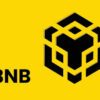
Welcome to the world of Bitcoin, where money isn’t made of paper, but of code! Now, before you throw your hands up and say, “I don’t have time for all this tech nonsense,” let me assure you—understanding Bitcoin isn’t as complicated as it might seem. We’re going to break it down step by step, using simple language, and by the end of this, you’ll be able to explain Bitcoin to your grandkids like a pro. So, grab your coffee, sit back, and let’s dive into this new-fangled digital currency called Bitcoin.
What Is Bitcoin, Exactly?
In simple terms, Bitcoin is a type of money, but it’s completely digital. There are no coins or bills you can hold in your hand. Instead, Bitcoin exists only on the internet. Think of it like sending an email, but instead of sending a message, you’re sending money. It’s all virtual—just numbers in a system.
Now, the cool part is that Bitcoin isn’t controlled by any government or bank. It’s decentralized, meaning it runs on a network of computers all around the world. This makes Bitcoin different from regular money (like dollars or euros) that is controlled by governments and banks.
How Does Bitcoin Work?
I know what you’re thinking: “Money made of code? How is that safe?” Great question! Let’s walk through how Bitcoin works.
1. Blockchain: The Digital Ledger
At the heart of Bitcoin is something called the blockchain. Imagine a big digital notebook that keeps track of every time someone sends or receives Bitcoin. This notebook isn’t kept by one person or company—it’s spread across thousands of computers all over the world. Everyone who uses Bitcoin has a copy, and the copies must agree with each other. This makes it very hard to cheat the system.
2. Mining: The Process of Creating Bitcoin
No, we’re not talking about digging for gold. Bitcoin “mining” is the process of solving complex math problems to verify transactions and add them to the blockchain (that big notebook we talked about). When a computer solves one of these problems, new Bitcoins are created as a reward. But don’t worry—you don’t need to solve any math problems yourself. There are lots of techies who do this “mining” work behind the scenes.
3. Wallets: Where Your Bitcoin Lives
Just like you have a real wallet for your cash, you need a digital wallet for your Bitcoin. Your wallet doesn’t actually hold Bitcoin; instead, it stores the keys (like secret passwords) that allow you to send and receive Bitcoin. Some wallets are online (on websites or apps), while others are on a USB stick that you can keep at home. Think of your digital wallet like the key to a safety deposit box, and inside that box are your Bitcoins.
Why Do People Use Bitcoin?
You might be wondering, “Why would anyone want to use this digital money when regular money works just fine?” Well, there are a few reasons:
1. It’s Borderless: Bitcoin can be sent anywhere in the world instantly, without having to worry about exchange rates or bank fees. If you want to send money to your friend in another country, it’s as easy as sending an email.
2. No Middlemen: When you send Bitcoin, there’s no need for a bank or payment company (like Visa or PayPal) to process the transaction. It’s person-to-person, which means lower fees and faster transfers.
3. Privacy: Bitcoin transactions don’t require you to share personal information like your name or address. While the transactions are public on the blockchain, the people involved are anonymous.
4. Limited Supply: There will only ever be 21 million Bitcoins. That’s it! This limit makes Bitcoin a bit like digital gold, and some people see it as a way to protect their money from inflation (when the value of regular money goes down over time).
How Do You Get Bitcoin?
Getting Bitcoin is easier than you might think! Here are a few simple ways:
1. Buy It: You can buy Bitcoin using regular money through an exchange like Coinbase or Binance. It’s kind of like buying foreign currency for a vacation, except it’s all done online.
2. Receive It: If someone owes you money, you can ask them to pay you in Bitcoin. You just give them your wallet address, and they send the Bitcoin to you.
3. Earn It: Some websites and apps will pay you in Bitcoin for doing simple tasks, like answering surveys or playing games. This is a fun way to dip your toes into the Bitcoin world without spending any money.
Is Bitcoin Safe?
Ah, the million-dollar question! Bitcoin is safe, but there are a few things to keep in mind:
1. Hackers: Because Bitcoin is digital, hackers might try to steal it. This is why it’s important to choose a secure wallet and never share your wallet’s keys with anyone.
2. Price Fluctuations: Bitcoin’s value goes up and down, sometimes dramatically. One day your Bitcoin might be worth $30,000, and the next day it could drop to $20,000. If you decide to buy Bitcoin, it’s a good idea to only invest what you’re comfortable losing.
3. No Refunds: Bitcoin transactions can’t be reversed. Once you send it, it’s gone. So, if you’re sending Bitcoin, be sure to double-check the wallet address you’re sending it to!
Common Bitcoin Myths
Let’s clear up some of the common myths you may have heard about Bitcoin.
1. Myth: “Bitcoin is used only by criminals.”
Truth: While Bitcoin has been used for illegal activities in the past (like any form of money), the vast majority of Bitcoin users are everyday people using it for perfectly legal things.
2. Myth: “Bitcoin is too complicated.”
Truth: If you can use email, you can use Bitcoin! Once you’ve set up your wallet, using Bitcoin is as easy as clicking a few buttons.
3. Myth: “Bitcoin is just a fad.”
Truth: Bitcoin has been around since 2009, and while it’s had its ups and downs, it’s still here—and many people believe it’s here to stay.
How Do You Start Using Bitcoin?
If you’re ready to try out Bitcoin for yourself, here’s a simple three-step process to get started:
1. Get a Wallet: Choose a Bitcoin wallet that works for you. There are many free ones available as apps or websites. Make sure it’s from a trusted source.
2. Buy a Small Amount: Start with just a little bit of Bitcoin—enough to play around with but not enough that you’ll lose sleep over it. You can buy as little as $10 worth.
3. Experiment: Once you have some Bitcoin, try sending it to a friend or paying for something online. The best way to learn is by doing!
Final Thoughts
Bitcoin might seem strange at first, but it’s simply a new way to think about money. With a little practice, you’ll get the hang of it, and who knows—you might even start enjoying the thrill of exploring this digital frontier! Whether you’re buying Bitcoin to invest, send money to family, or just to try something new, remember to have fun and take it slow.
Now, go impress your grandkids with your newfound Bitcoin knowledge!










